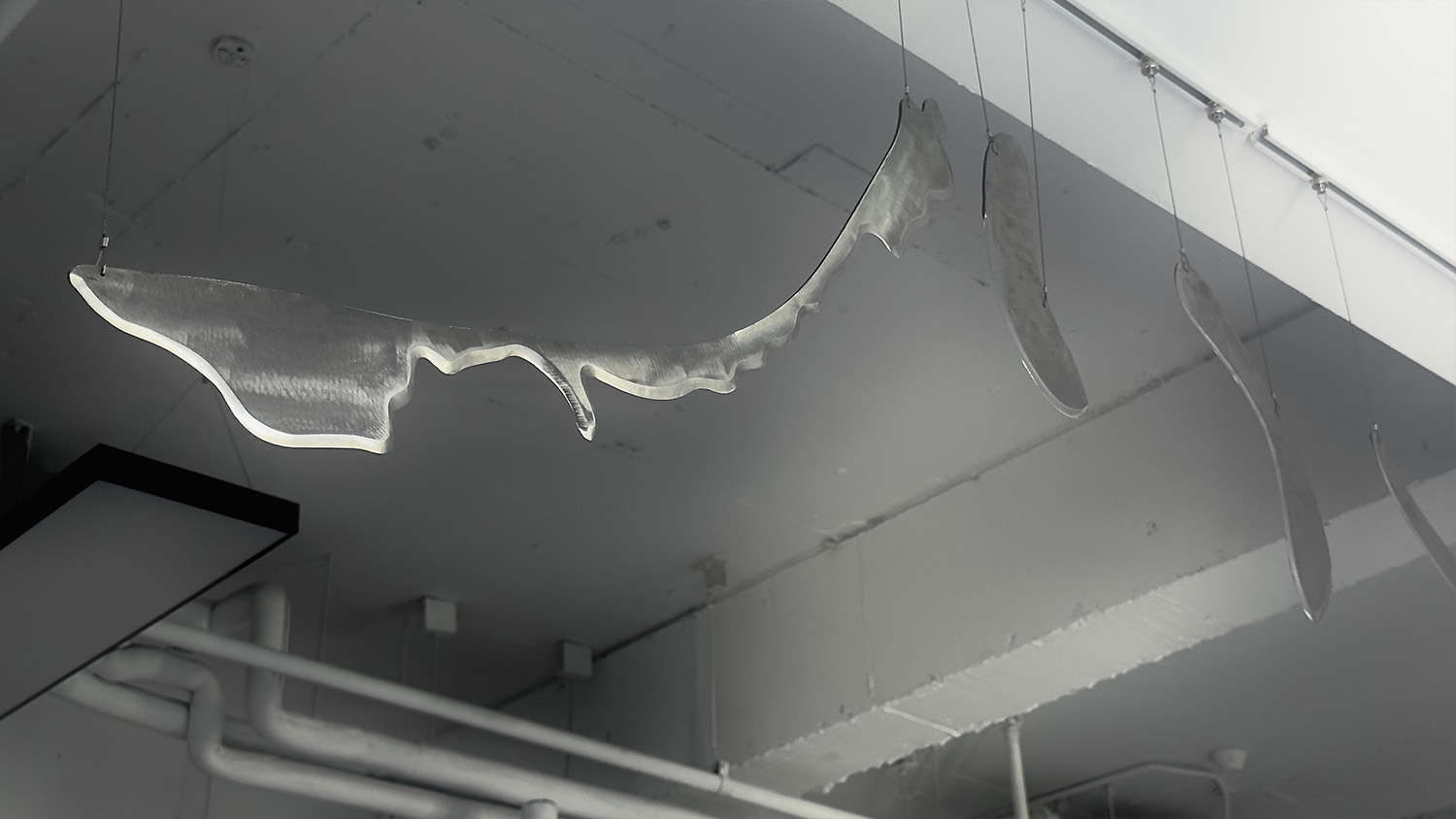作品故事
在我的成长经历中,经历了很多次地震,从轻微的震感,到6.5级的剧烈晃动。即使过往的每次地震都没有对我造成实质性的伤害,但每当地震袭来,我仍会感到来自大自然的无名的恐惧与压迫感。
这些经历让我意识到,我们建立了强大文明,却时常忘记人类在灾难面前的弱小与无助,我们生活在超级城市综合体中,遗忘了这个世界上依然还有群体正遭受着灾难的摧残,于是我展开对于地震灾害的研究。地震的伤亡不仅仅是自然或人为因素的单一归咎,而是一个复杂而又深刻的综合体。
如果艺术作品可以有灵魂,在这个作品中,我希望它是来自地震中亡魂的警示。锋利的“刀片”向装置下方的生者袭来,直击灵魂的压迫感是我想给观众带来的第一感受。因此,我提取了地震带的形状,选用冰冷的钢铁作为材质,磨出锋利的刀刃,错落地悬挂在展厅中,形成一个复杂而有序的阵列,就像地震带中无数个灵魂发出同一种声音。这种声音是来自生命对于不可抗力的呐喊,是逝去的生命向世人宣告它们存在过。当观众站在这些“利刃”之下时,感受到的压迫、威胁和恐惧;冰冷,沉重与悲伤,正是我想传达的“共情”,与逝者共情是最好的纪念和哀悼。
在二维装置作品中,垂挂的红线背后是数以万计陨落的生命,我用这种方式直观地展现生命的代价。在三维装置作品中,利刃随之坠落的压迫感,呼应地震中轰然倒塌的一切。观众站在装置下,直观地感受到坠落的瞬间,巨响在脑海中回响。这正是我想达到的作品传播目的。
I have experienced many earthquakes in my formative years, ranging from mild tremors to violent shaking of magnitude 6.5. Even though each past earthquake did not cause me any substantial damage, I still feel an unnamed sense of fear and oppression from nature whenever an earthquake strikes.
These experiences made me realise that we have built a powerful civilisation, but often forget how weak and helpless we are in the face of disasters, and that we live in mega-city complexes, forgetting that there are still communities in the world that are suffering from disasters, so I started my research on earthquake disasters. Earthquake casualties are not just a single attribution of natural or human factors, but a complex and profound combination.
If a work of art could have a soul, in this case I wanted it to be a warning from the souls of those who died in the earthquake. The sharp 'blades' coming at the living beneath the installation and the oppressive feeling of the soul is the first thing I wanted to bring to the viewer. I have therefore taken the shape of an earthquake zone and chosen cold steel as the material to sharpen the sharp blades, which are hung in a staggered manner in the gallery, forming a complex and orderly array, just like the countless souls in the earthquake zone making a single sound. This voice is a cry of life against the unstoppable, a declaration of their existence by the departed. The oppression, threat and fear that the viewer feels when standing beneath these 'blades'; the coldness, heaviness and sadness, is the 'empathy' that I want to convey, empathy with the dead is the best way to remember and mourn.
In the two-dimensional installation, behind the dangling red lines are tens of thousands of fallen lives, which I use to visualise the cost of life. In the three-dimensional installation, the crushing sensation of falling blades echoes the collapse of everything in the earthquake. The viewer stands beneath the installation and visually feels the moment of the fall, the loud sound echoing in their minds. This is exactly what I wanted to achieve with the communication of the work.












